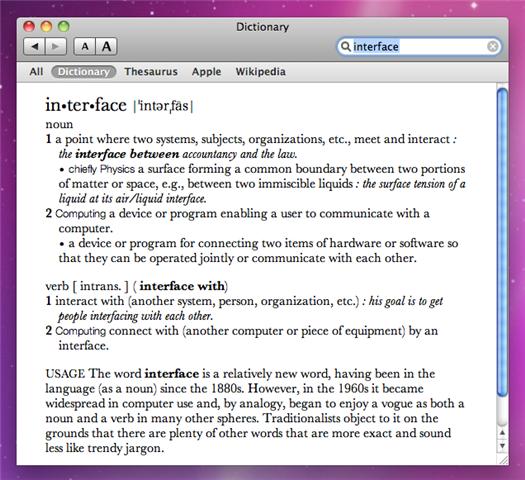 |
 |
|
Users + modes of information seeking Design Challenges for libraries |
User Interface, variously referred to as Human Computer Interface (HCI) and Man-Machine Interface (MMI), is defined as "the aggregate of means by which people (the users) interact with [a] system" (that is, a machine, device, computer program, or other complex tool) (Wikipedia, 2009). Interface is the 'intermediary' which allows for input (user manipulation of a system) and output (the systems indication of the effects of the user's manipulation). In Being Digital (1995), architect and MIT media lab founder Nicholas Negroponte draws the (delightfully simple) comparison between user interface and the windshield, steering wheel, and gas pedals on a car: without these, it is difficult--if not impossible--for one to drive. Contrary to popular conceptions then, the user interface of an IR system is more than aesthetics; rather, it is “an important feature that impacts the user’s performance and satisfaction with the system” (Ahmed, McKnight, and Oppenheim, 2006). |
|||
|
||||
| |
||||
|
Search Interface: In Your Face |
